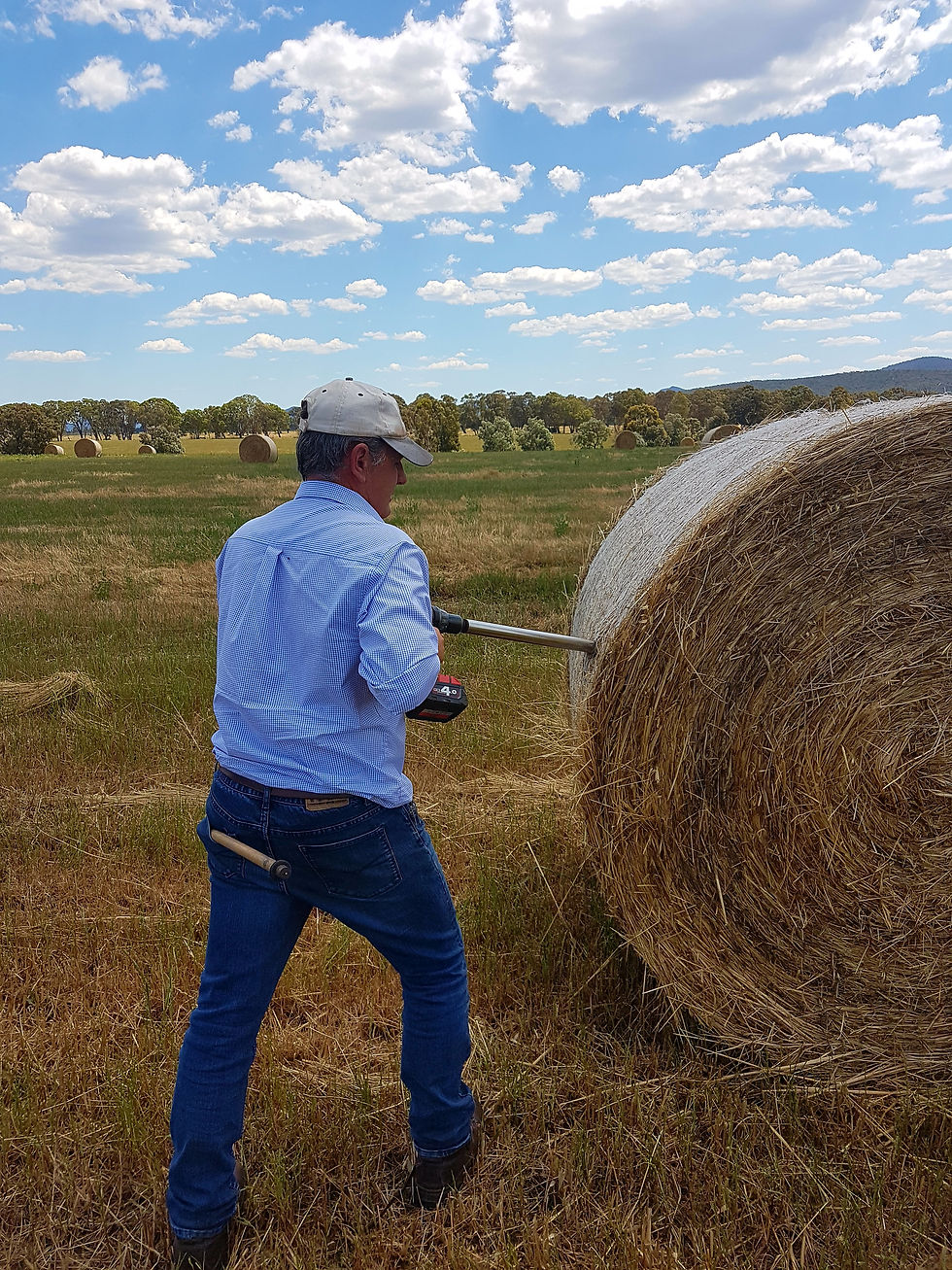INTENSIVE FEEDING PROGRAMS: What is your strategy?
- Rebecca Thorn

- Dec 23, 2021
- 3 min read
Confinement Feeding or Intensive Feeding programs are implemented either as a strategy to complement existing farm feed platforms by removing stock from paddocks to maintain pasture cover, to minimise overgrazing particularly on light country or allow regeneration of paddock feed after rain events. Feedlot programs are generally implemented with the objective to meet a market specification as efficiently and cost-effectively as possible. Ration formulations, feed conversion efficiencies, delivery systems, and monitoring gains are all critical points to a successful program. No one system or strategy is perfect; planning, implementation, execution, and results should be considered within the parameters of the farm business.
Feed delivery systems take several forms:
Ad-lib forage and grain
Lick feeders and Ad-lib forage
Trail feeding concentrate with managed forage feeding, and
Total Mixed Rations
All these systems have advantages and disadvantages, however, there is only one objective:
Delivering a balanced consistent ration efficiently.

Owen Rees, our Senior TRAC Nutritionist, outlines the detail when looking at ration balancing…
To Focus on Nutrition:
We know that lambs don't eat ME, they eat grams of carbohydrates or starch - ME is simply a calculation. We need to remember that when we feed ruminants, we are feeding the gut bacteria and that in turn feeds the lamb. These bugs have a Carbon:Nitrogen ratio that needs to be maintained for optimal production. Therefore, not all energy sources are created equal and although starch is the best for growing bugs if not managed correctly too much can have a negative effect.
On the other side of the equation Nitrogen/Protein sources are the same, CP or Crude Protein is a calculation of N x 6.25 and we know that the lamb eats grams of protein, but we need to make sure it is used in the correct site for digestion.
Fibre is an underrated feed ingredient in many feedlots. A lamb, being a ruminant is designed to digest and extract energy from lower-quality forage, so without fibre the animal can't perform to its genetic potential. The major problem with fibre is that it has a filling factor to the animal, which if fed in excess will drop dry matter intake and thus growth rates.
Any animal in confinement will have the challenge of gaining enough macro and micro minerals to maintain the constant rate of growth they are experiencing. Imbalances in these nutrients and in their ratios can see the onset of the nutritional disease which can impede growth at the lower end and death at the other. Keeping in mind, not all minerals are readily available i.e. Magnesium is unable to be stored in the system, so daily requirements are important, along with interrelationships with Calcium and Phosphorous absorption. Vitamin D is also required in this process. For these reasons, we focus on high-density powder supplements generally offered in a free choice format. Feed delivery systems and balancing the rations is by far one of the biggest challenges in confinement.
When evaluating this, the things we can do our best to balance is:
Energy as MJME/kg DM (Dry Matter)
Protein as CP% DM (Dry Matter)
When delivering the diet, we can monitor either as a group or individual intakes:
Concentrates in the form of grain/minerals/pellets
Forage either hay/silage/pasture
Planning ahead requires a production target time frame, what feeds are available and utilizing them in the feed system in use.
Reviewing the results can be as simple as how much went in (Feed) how long it took and how many (livestock) hit the target in the time frame.
For more information on how your local TRAC expert can assist you & your farm with an intensive feeding system program, please speak with one of our consultants.
Our Consultants
EXPERTS IN RUMINANT PRODUCTIVITY
Tom Thorn
0427 243 319
Owen Rees
0429 437 823
Mark Facy
0427 243 320
Mikaela Baker
0457 243 319
To download a copy of this article, please click the link below...




Comments